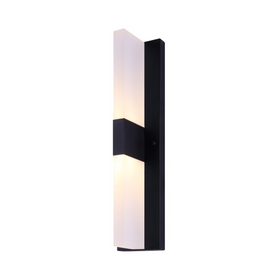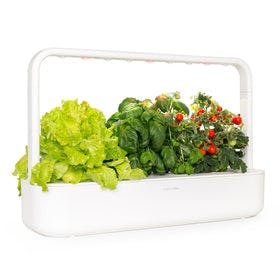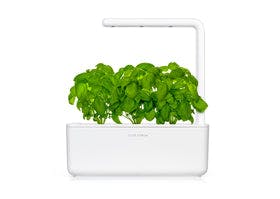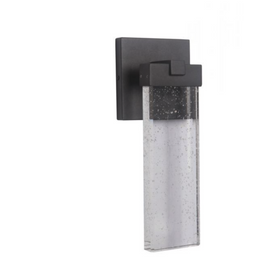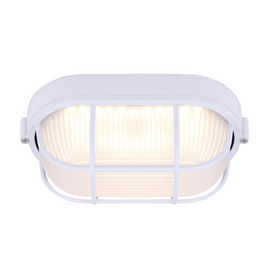
Seed Balls: A DIY Guide
Last Updated: Apr 9, 2025Have you ever had to contend with the elements for the success of your plants? It's common for seeds to fail, especially in nature, where it truly is survival of the fittest. Ever wish for a way for you to scatter seeds around your property and increase their odds of survival? The ancient technique of making seed balls may be what your property needs.
Table of Contents
- What Are Seed Balls?
- Why Make Seed Balls?
- How Do You Plant Seed Balls?
- What Do You Need to Make Seed Balls?
- What Clay Do You Use for Seed Balls?
- How Do You Compost for Seed Balls?
- Which Seeds Should You Use for Seed Balls?
- What Are The Water Requirements for Seed Balls?
- What Is the Mixture Ratio for Seed Balls?
- How Do You Make Seed Balls?
- How Do You Store Seed Balls?
- What Can You Add to Seed Balls?

What Are Seed Balls?
Seed balls are an ancient method of sowing fields with seeds without first opening the soil with tools. The exact origin of this strategy is unknown. Still, they appear in many locations and times, ranging from ancient Greece and Egypt to modern Japan.
Due to how globally spread they are, seed balls have accrued many different names over the years—seed bombs, clay seed dumplings, or seed pellets, to name a few. Despite their different descriptors, seed balls all have three things in common: clay, compost, and seeds.
Seed balls were repopularized shortly after The Second World War by Masanobu Fukuoka, an agricultural scientist, farmer, and philosopher. Fukuoka explains his reasoning for developing a natural farming method in his "One-Straw Revolution." He aimed to create a way to produce food without intensive machinery and chemical fertilizers. So he spent his time broadcasting seed in his fields as many traditional cultures had before.
Typically, the scattering of seeds only comes with more problems. They are baked in the sun, scattered by the wind, washed away by rain, or consumed by animals. For Fukuoka, mice and birds were destroying his crops before they could sprout. So he began mixing his seeds with powdered clay and little bits of water. He noticed an increase in successful seed germination with this method. Why? The clay-encased seeds protected them from potential consumers long enough for rain to wash away the barrier and allow the seeds to germinate.

There are various small scale commercial seed ball options on the market today, from companies like Heritage Bee, Seedles (who make DIY kits too), and Seed-Balls.com.
Why Make Seed Balls?
Making seed balls is a fun and simple activity that anyone can enjoy anywhere in the world. It is a great thing to do with the kids when stuck at home at any time of the year because you can dry and store them for a later date. It can even act as a great way to reseed the neighborhood while teaching children the importance of biodiversity.

How Do You Plant Seed Balls?
Seed balls are excellent for urban areas where you may struggle to open up your ground for gardening. It can be hard to get a shovel or garden fork in yards with rocky soil deep enough to till. You can scatter the seed balls across the surface, and as the seed develops, the remaining clay and compost act as a place for the root system to start. As the plants mature, they shade the ground and create a stable environment for other plants to grow.

You can use these seed dispersal pods in various ways across your yard. Create a variety of them for different scenarios and store them away. You can have ones you use to build soil stability by including native pioneer species and others to bring in pollinators.
In the end, you control what you put into the seed balls. With seeds from companioned plants in the pods, you can build resilience into your garden with a flick of the wrist. Regardless of how tiny the seeds are, seed balls work and boost the young plants.
What Clay Do You Use for Seed Balls?
Fukuoka recommends using pulverized red volcanic clay because he found that it better-held together the pellets. White or gray clays can work, so feel free to experiment with your clay options and see if a more locally sourced clay option works well. Regardless of which clay you use, make sure it's ground into a fine powder. You don't want rocks, clods, or any organic matter in your final mixture. Your aim is going to be for pure clay powder.
How Do You Compost for Seed Balls?
Like the clay, you're going to want to ensure your compost is also finely sifted. Look through your compost and remove any large pieces of material and break down any clumps. Andrew Schrieber at Permaculture News recommends three types of screens if you choose to sift your compost. Utilizing a ½ inch, ¼ inch, and 1 mm screen, you'll be able to sift out large materials, leaving only fine particles to be incorporated into the seed ball.
No screen? No problem! Whether you are using a sieve for clay or compost, you can do it at home with a large bowl. Place your material in the container and swirl it in a circular motion. By keeping the bowl level, the content will begin to separate between fine particles and clumps. You can then quickly remove the material you don't want until you are comfortable with your remaining mixture.
Vermicompost is excellent for seed balls because it's already broken down into fine castings.

Which Seeds Should You Use for Seed Balls?
There are plenty of seed options to put into your seed balls. Take some time to think of what you would love to see pop up around your yard and purchase those plants. How do you want to use your seed balls? Are you going to want to seed annual wildflowers or perennial fruits? Have you considered putting various seeds that makeup a guild into a ball? Consider using seed balls for flowers. It's an excellent way to bring in pollinators, and if you choose your seeds wisely, you could produce flowers for busy bees year-round.
What Are The Water Requirements for Seed Balls?
The amount of water required is going to vary. Depending on your mixture, you may need more or less water to create a malleable material. Your goal will be to add enough water to make the clay and compost stick to the seeds. Adding too much water to the mixture makes it runny and difficult to work. It will no longer form into a ball, and if there is too much moisture, it could be enough to cause the seeds to sprout while they are supposed to be dried.
If you notice your mixture becoming crumbly, add a little bit of water at a time. Knead the moisture into the clay-like until you can work it without it falling apart.
What Is the Mixture Ratio for Seed Balls?
Since you will be working with a large bowl to swirl around the combination of ingredients, make sure you work with manageable batches. The amounts for what goes into a proper seed ball vary from person to person. Fukuoka's recommendation is an ingredient ratio of :
- Five parts dry powdered clay.
- Three parts fine sifted compost.
- One part seed mix.
- Splashes of water.
How Do You Make Seed Balls?
Begin by collecting your tools and materials and keeping them close at hand. Thoroughly mix into a container your dry ingredients. Please make sure there aren't any lumps in your dry mixture before adding them to the bowl. You can use a bowl or a flat tray, whichever works best for you. A flatter tray is a popular choice because as you later mix in the water, you may begin to see the seed balls forming as you swirl the bowl.
Now, you can mix in the seeds right away for your dry ingredients, or you can leave them to add later. Assuming you're adding seeds initially, once your dry ingredients are well mixed, you can begin to add water slowly to the mixture.
It's best to be patient at this stage and not add too much. You want the water to coat the seeds, causing the clay and compost to stick to them. As you continue to swirl your container around, you may begin to see those seed balls already forming at the bottom. Don't worry if this initial coating doesn't produce a perfect sphere.
You'll know when you have the proper water ratio to dry ingredients when it resembles molding clay texture. Accidentally adding too much water can be remedied by adding more clay. Too stiff or not sticking together, add a little more water.
If you didn't add the seeds, you're going to want to knead the clay-compost-water mixture as you would dough. Kate Carter Frederick with Better Homes and Gardens recommends rolling your ball into a sphere the size of a walnut. You can then sow seeds directly into the center of the ball. Roll the mixture back into a ball roughly an inch in diameter before drying.
How Do You Store Seed Balls?
Once you have completed your seed balls, you should leave them to dry out on a rack. If you are making them on a warm, sunny day, it will allow them to dry out relatively fast. If enough moisture remains inside the seed ball, it may entice the seedlings to germinate before you're ready to use them.
Consider letting them dry out for 24-48 hours before you store them. When storing, you're going to want to keep them in a warm, airy location in your house. Consider placing finished seed balls in a cardboard box when saving them. Plastic bags or containers will hold potential moisture. Try to avoid storing near heat and humidity while storing to maintain the viability of the seed ball.
What Can You Add to Seed Balls?
You can add some things to your seed ball to assist your yard or increase successful germination chances.
Consider adding some soil from an untouched parcel of land. The ground of undisturbed forests and grasslands are teeming with an untold number of indigenous microorganisms and beneficial bacteria. Why add these microbes to your seed balls? These microscopic life forms can assist in various soil processes and are active combatants to detrimental soil bacteria. By spreading native, invisible soil life, you help the soil environment, ultimately helping your plant's environment.
No virgin wilderness near you? That's alright! You can also purchase inoculants from your local garden supply. This mycorrhiza doesn't provide the same organisms as native soil, but it boosts your plants. These inoculants are essential to include if you are seeding nitrogen-fixing plants. The rhizobia that latch to the roots of legumes aren't always present in the soil.
Check for small nodules on the roots when you remove a supposed nitrogen-fixing plant to determine if you need to introduce nitrogen-fixing bacteria. If there are no nodules, then bacteria is not attaching itself and ultimately not fixing atmospheric nitrogen.
If you're planning on throwing your seed balls instead of planting them, consider adding fiber. Fibrous materials, like finely chopped straw, build tensile strength. Once dried, the straw helps bind the ball together and allows it to be thrown a greater distance without breaking upon impact.

Seed balls are just another example of an ancient technique that effectively allows the average person to retake control of their yards' micro-environments. They allow you to spend more time relaxing and enjoying your yard than investing time, money, and energy into replanting every season.
Tanner Sagouspe
Tanner Sagouspe has a Masters in Environmental Management and is a Permaculture Designer who promotes tackling the climate crisis at home.





